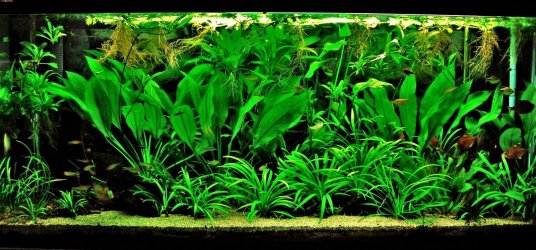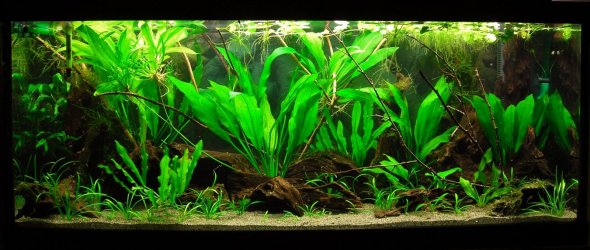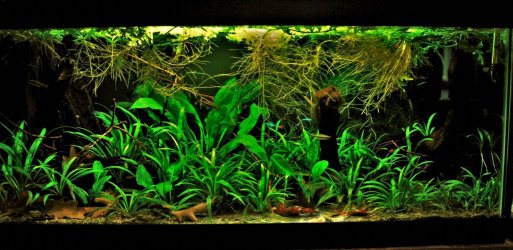About 12 years back, on another forum, I was being encouraged to set up a soil tank. In my early days over 20 years ago, I learned the hard way that you cannot start messing with experiments when you have fish in an aquarium. There are natural "laws" governing biology and chemistry that play out according to the water parameters and the fish load and plant load. As with anything in the natural world, it is always best to work with nature and not against it. Having learned this, I have ever since been extremely thorough in my research before venturing into some "fad." And that is what these things are, fads. Back in the 1980's the fad was iron rich clay (laterite)--but this fad died out because it was found to not have the benefits but it did have detriments. Same happened for using kitty litter, and other nonsense.
So when I was being encouraged to set up a soil tank, I read Diana's book, several of her articles, joined her forum, and learned from other successful planted-tank aquarists. It became blatantly obvious that soil was a major problem. Add to this the fact that plants grow just as well using inert substrates. My fish have always been primary, with plants second. The risk was just not worth it.
I was however persuaded to try one of the so-called "plant-enriched" substrates. This turned out to be a total disaster, and a terrible waste of money. Within one week I had to remove my cories due to barbel degeneration, probably from the roughness (though in my hand I thought it was any thing but rough) but possibly also due to the bacterial issues that come with any of these substrates about which I knew nothing beforehand. I loved my cories and loaches, and I had no intention of causing them such harm. I removed them, but after two years I dumped the substrate in a hole in the back garden and replaced it with play sand. Plants grew just as well over the following 8-9 years, and the fish were certainly healthy.


















